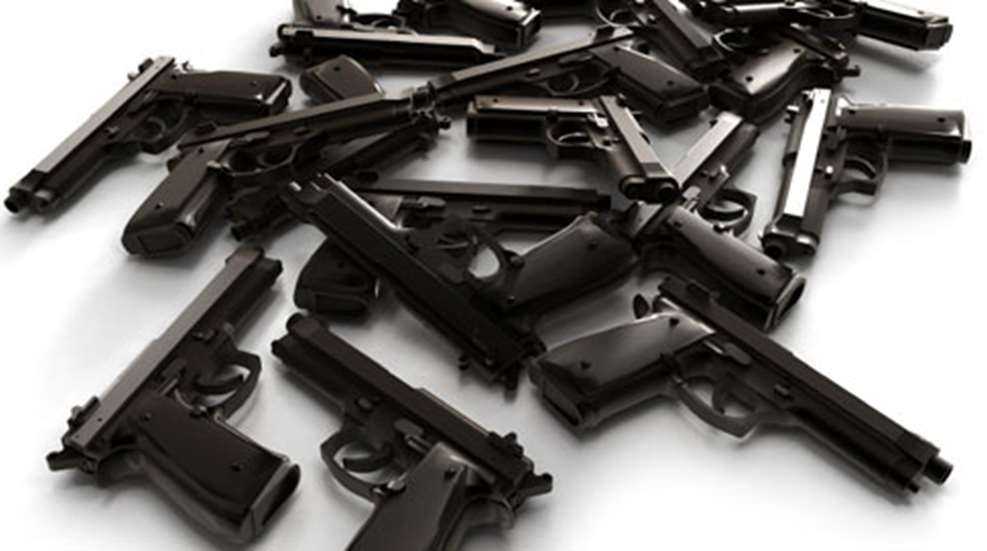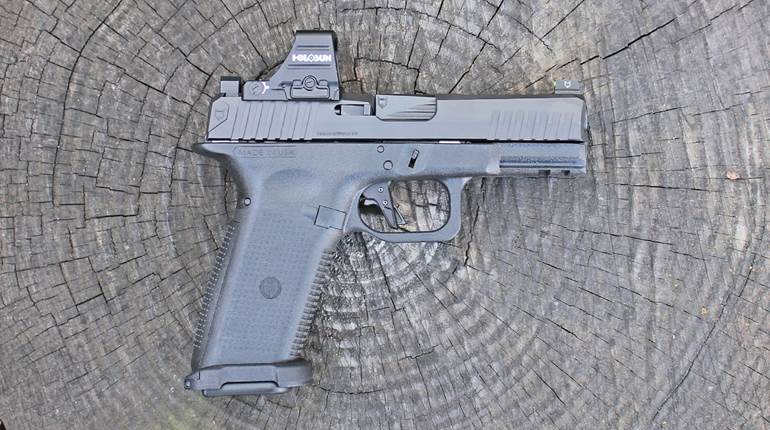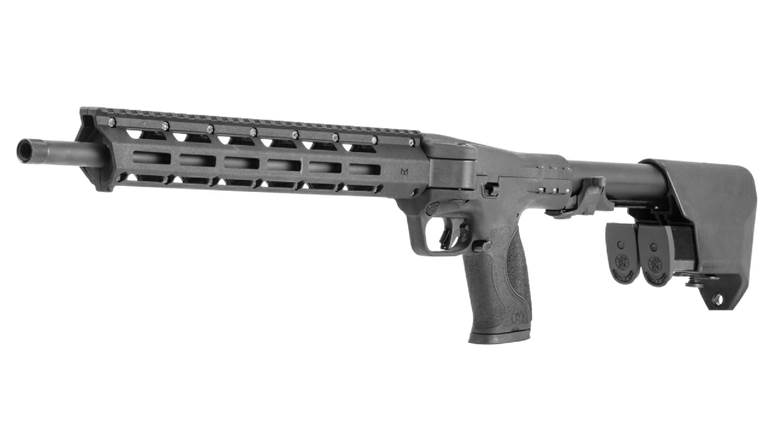
Recently, one of my best friends called to ask if I would help him choose a defensive handgun. Now, we’ve been friends for years, and more than once I have brought up the topic of defensive firearms to no avail. He had no interest in owning a gun. So, needless to say, I was surprised to get this call.
Like many non-shooters, who suddenly decide to join the shooting community, he experienced what can be called a “triggering event.” Whether it’s a crime report on the news, an attempted crime against a friend or them personally, a triggering event nudges folks off of the fence and into the decision to become armed citizens. In my friend’s case, a family member in another town was protected from harm by two neighbors who were in the right place, at the right time, with their guns.
Realizing that he could have done nothing to help in a similar situation, my friend started researching defensive handguns. Since he’s Internet savvy, he had gone out and found miles of commentary and firearm specifications on the Web. However, the sheer volume of makes, models, options and contradicting opinions left him feeling completely overwhelmed. In this situation, it certainly makes sense to turn to someone familiar with firearms for advice.
As we talked, another point became clear. My friend’s desire to find a reliable defensive tool is not the same as a newfound love of shooting. He doesn’t want to become a shooting hobbyist, a collector, a hunter or to participate in a variety of shooting sports. He wants just one gun that he can learn to operate successfully and depend on in case he needs to defend his family and home.
So, how do you help a friend or associate pick just one gun from all of the models currently on the market? The best way to start is to narrow the list of infinite possibilities down to a short list of options, and then narrow the short list down to a few models your friend can try. Over the years, I've put together some mental checklists I like to review with new shooters to help them come to a decision. If they are new to shooting, want just one gun and the gun is primarily for self-defense, then the checklist looks something like this:
Rifle, Shotgun or Handgun?
The first question may not be which handgun to buy. Defensive shotguns and rifles offer much more stopping power than handguns. Their length, weight and configuration can make them easier to learn to shoot as well, and many pump-action shotguns cost significantly less than a quality handgun. Defensive rifles often cost more than a handgun, but they offer more flexibility since they can also be used for hunting and long-range target shooting if the person later decides to expand his or her shooting activities. If your friend has little or no shooting experience, this may be the time to plan a trip to the range to give him or her an opportunity to test fire all three types of guns.
House, Car, Concealed Carry or Mixed Purpose?
Identifying where a defensive handgun is going to be located for most of its working life can help to determine which one will be the best fit. For example, if a pistol will be used primarily for home defense and will spend most of its life stored in a lockbox in the master bedroom, size and weight are not much of a concern. This is also true for a gun that will spend most of its time stored in a vehicle. For both of these uses, a full-size duty handgun with good sights and a full-length grip will do nicely. It will also provide the best ammunition capacity and be more comfortable to practice with.
If the gun will be used primarily for legal concealed carry, then size and weight become factors. Many self-defense gurus and folks who carry are committed to making the lifestyle and wardrobe changes necessary to carry a full-size lead sled. But that's not the case for everyone. Most of the non-military and non-law enforcement types I know who choose to go armed use compact, lightweight handguns designed specifically for concealment. These pistols are much easier to carry, but often sacrifice caliber, ammunition capacity and other features that make pistols more pleasant to practice with.
If your friend wants just one gun to fill the roles of target shooting, home defense and concealed carry, then you may want to encourage them to research handguns that split the difference between duty size and concealment guns. These medium-framed handguns are chambered in popular defensive calibers, but have a smaller profile. They are large enough to shoot comfortably, but trimmed down to be more easily concealed. Most manufacturers have at least a few models that fit into this category.
Cylinder or Slide?
The current popularity of high-capacity, semi-automatic pistols have some shooters thinking that double-action revolvers are obsolete. However, the comparison of semi-autos versus revolvers has always been a discussion of apples and oranges. Both designs are useful for self-defense, but for different reasons. Semi-autos usually offer a higher ammunition capacity, but revolvers are simpler to operate. Semi-autos offer faster reloading times, but revolvers are far less ammo sensitive. The most important thing is to help your friend weigh the features that double-action revolvers and semi-automatics offer against their specific needs.
Caliber
Readers may be surprised that I wait to discuss caliber options until this point in the conversation, but I have a good reason for doing so. If someone is new to shooting, then trying to talk through the technical aspects of pistol calibers, ballistics and bullet styles will often leave a person dazed and confused. By discussing the handgun's purpose and action type first, then the choice of caliber is already narrowed down to a manageable few.
From Checklist to Shopping List
Purchasing a gun can be an expensive proposition. A new shooter who has made it this far is usually ready to make the financial commitment, but they may not be aware of all the items, procedures and costs involved in owning a firearm. After the defensive pistol itself, their shopping list and budget should include:
- A lockable storage device (strong box, safe, locking case, etc.)
- Permits or licensing fees, if required
- Cleaning supplies
- Holster(s)
- Additional magazines or speed loaders
- Practice-grade ammunition
- Defense-grade ammunition
- Gun range fees
- Education (classes, books, etc.)
As a general rule of thumb, I advise new shooters to decide how much they want to spend on the pistol, and then double that amount to cover the cost of everything else they will need. The item they absolutely must have on hand the day they bring their gun home is a lockable storage device. After that, other items on the list can be put on a purchasing schedule to fit their budget.
Just One More
I like to point out to budget-conscious one-gunners that they can curb shooting costs and maximize range time by purchasing a second handgun chambered in .22 LR. This suggestion seems counter intuitive until we talk about ammunition costs. For about the same price as 50 rounds of a popular defensive pistol caliber, shooters can usually buy upwards of 500 rounds of .22.
Several manufacturers build pistols designed to mimic the grip shape and controls of a defensive handgun. A .22 is a great way to warm up at the range before running defensive drills and focused practice to overcome a bad habit or to learn a new skill is much more affordable to conduct. I have also found that even the most reluctant spouse is usually willing to practice with a .22. If a new shooter is ready to commit to regular practice at the range, then a .22 will quickly pay for itself and will keep saving him or her money for years to come.
Meaningful Research and Testing
By now the infinite list of possibilities should be narrowed down to that short list I mentioned before. My friend’s short list included duty-size, polymer-frame semi-autos in popular self-defense chamberings that accepted high-capacity, double-stack magazines within a specified price range. With this information in hand, I was able to make his Internet research much more meaningful. I pointed him directly to a handful of pistols that matched his short list and price range, such as the Glock 17, Ruger SR9, Smith & Wesson M&P and Springfield XD. And, with these criteria clearly defined, he can also look up models I may not have included. When he identifies a couple models he wants to test fire, then it will be time for us to head to a range that provides rental guns and let him try the pistols for himself.





































